5 LinkedIn Automation Myths That Are Costing You Leads
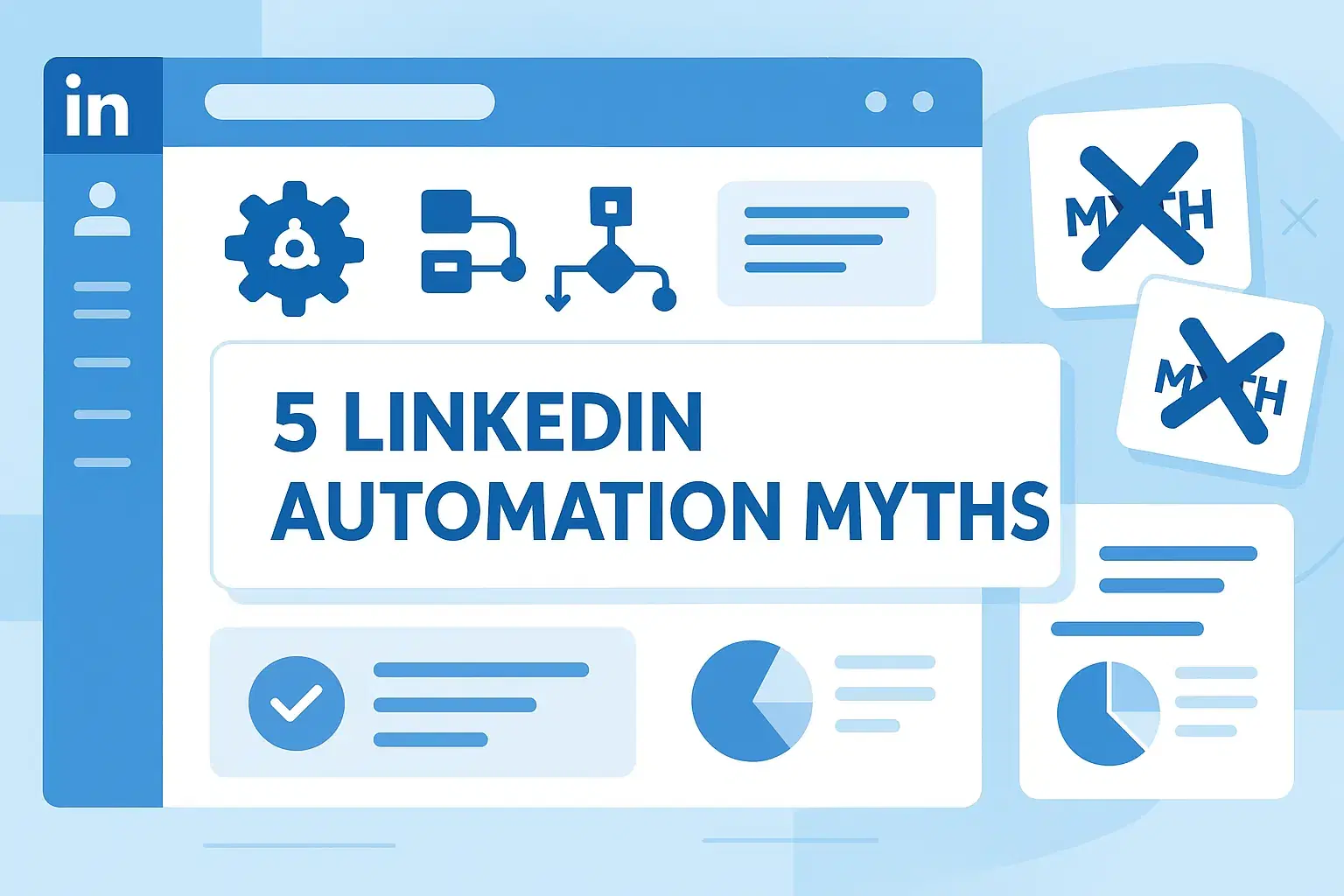
LinkedIn has become the goldmine for B2B lead generation. Yet despite investing in automation tools, many sales professionals, SDRs, and agency owners watch their lead conversion rates drop fast.
The problem? Five common LinkedIn automation myths that hurt even the best outreach campaigns.
These wrong ideas don't just waste your time and budget. They also damage your reputation, limit your contacts, and send potential customers to your competitors.
Let's show the truth behind each wrong idea and help you change your LinkedIn lead generation from failure to success.
Myth #1: LinkedIn Automation Kills Personalization and Relationships
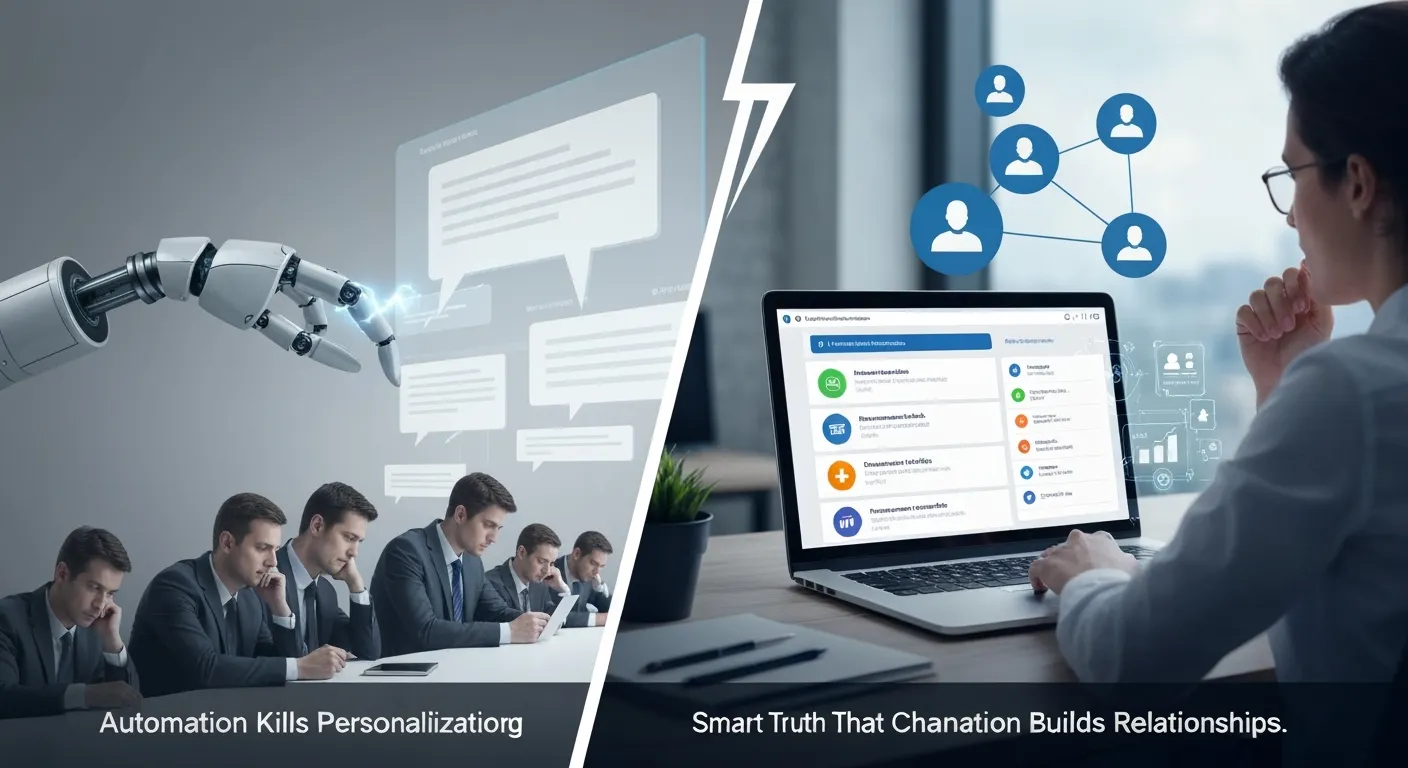
This myth is the biggest concern for sales professionals.
- The Wrong Idea: Automation creates robot-like, basic messages that prospects spot right away and ignore.
Most sales teams think automation means giving up the personal touch that builds real business relationships.
The Truth That Changes Everything
- Modern LinkedIn automation tools use AI-powered personalization that actually helps build relationships at scale.
- Smart automation doesn't replace human connection. It helps you create meaningful touchpoints with hundreds of prospects while keeping communication real.
How Smart Personalization Really Works:
- Custom details go far beyond adding a first name
- Profile checks look at recent posts, company news, and shared connections
- Smart follow-ups respond to prospect actions automatically
- Multi-channel setup aligns LinkedIn outreach with email campaigns
- Context messaging creates relevant responses based on prospect behavior
Real Results from Smart Automation:
- Sales teams using AI personalization get 3 times higher response rates
- Connection acceptance rates jump from 12% to 34% with smart follow-ups
- Response rates improve when focusing on helpful messaging
The Key to Relationship-Building Automation:
Focus on helpful messaging instead of quick sales pitches. Share useful industry insights, congratulate on achievements, or offer helpful resources.
This approach makes you a trusted advisor rather than another pushy salesperson.
Myth #2: All LinkedIn Automation Tools Give the Same Results
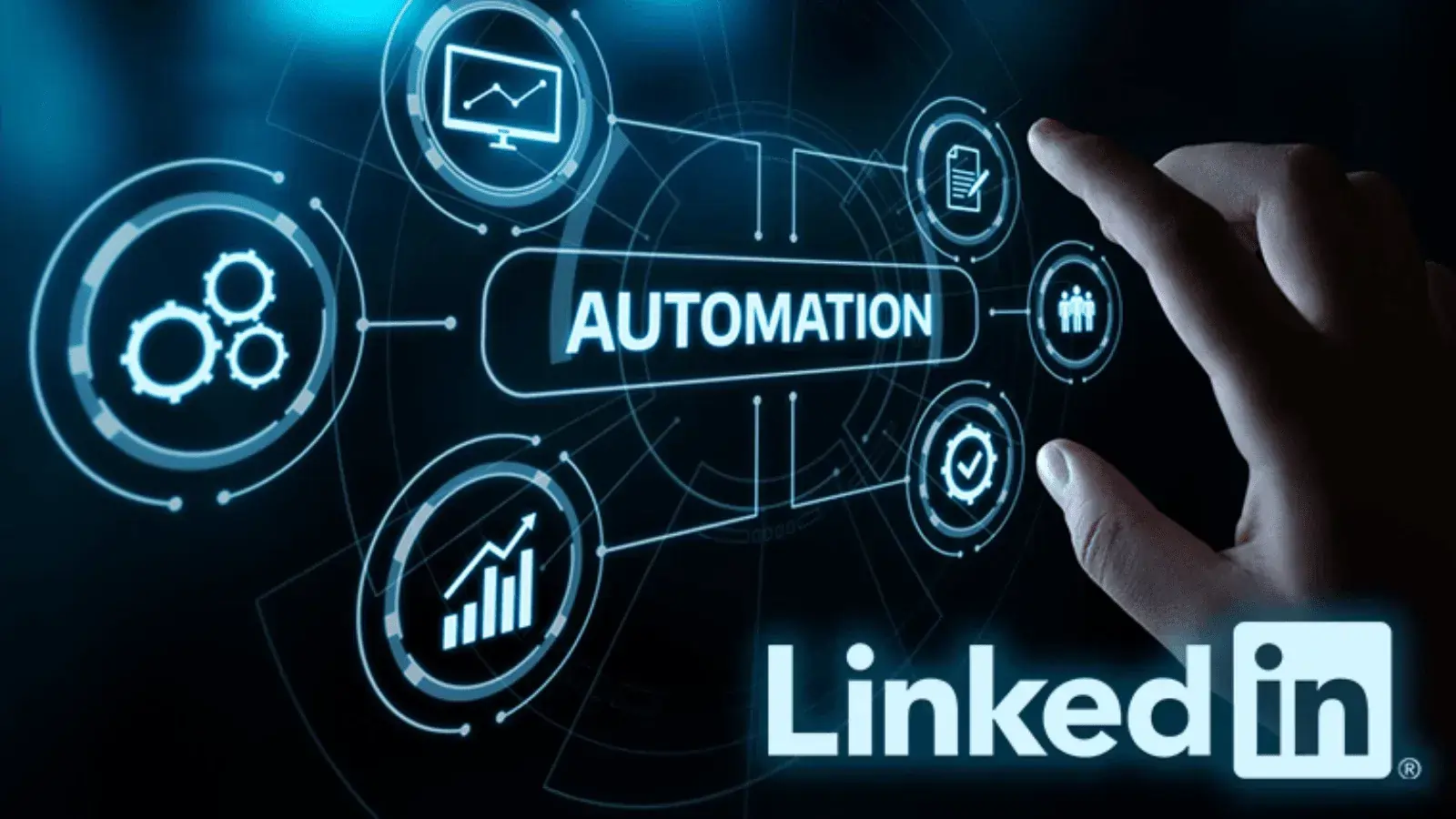
Sales professionals often pick automation tools based only on price. They think all tools work the same way.
Why This Myth Costs Money
- Different tools work with very different safety rules, personalization features, and rule-following standards.
- Picking the wrong platform can cause account limits, poor message delivery, and damaged professional reputation.
Key Differences That Affect Your Results:
Safety Features:
- Premium tools use local IP addresses and copy human browsing patterns
- Cheap options work from shared cloud servers, triggering detection systems
- Quality tools add random behavior features
Personalization Level:
- Basic tools only offer simple name insertion
- Advanced platforms give behavioral analysis and emotion detection
- Enterprise solutions deliver context messaging features
Connection Options:
- Premium tools connect well with CRM systems
- Advanced platforms link with email marketing tools
- Enterprise solutions sync with sales analytics platforms
Rule Following:
- Quality tools keep safety rules updated
- Premium platforms watch LinkedIn's changing terms
- Poor options leave you open to policy breaks
Warning Signs of Bad Automation Tools:
- Unlimited sending promises that ignore LinkedIn's safety limits
- No random behavior features
- No connection with major CRM systems
- Missing updates on rules or safety guidelines
- Unrealistic pricing that seems too good to be true
Investment vs. Cost View:
- Premium automation tools need higher upfront costs but protect your LinkedIn account value. They generate better returns through improved message delivery and conversion rates.
- One SDR team saved $50,000 in potential account recovery costs by switching from a cheap tool to an enterprise solution.
Myth #3: Automation Runs Successfully on Autopilot

This is perhaps the most dangerous myth hurting LinkedIn lead generation.
The "Set and Forget" Problem
- Many sales professionals set up their automation sequences once, then expect steady results forever.
- This approach ignores LinkedIn's changing algorithms, evolving prospect behaviors, and shifting market conditions.
Why Autopilot Automation Fails:
- LinkedIn regularly updates platform algorithms affecting delivery
- Prospect preferences change based on economic conditions and industry trends
- Competitor activities influence target audience response patterns
- Message fatigue sets in when prospects get similar automated content
- Market changes require strategy adjustments
Essential Ongoing Tasks:
Performance Checks:
- Watch connection acceptance rates weekly (aim for 25-30%)
- Track message response rates (target 15-20%)
- Measure lead-to-opportunity conversion rates (benchmark at 5-8%)
- Review campaign metrics for trending patterns
Testing Cycles:
- Test different message versions every two weeks
- Try various sending times and connection approaches
- Compare subject lines and call-to-action effectiveness
- See which personalization elements work best
Audience Updates:
- Update target criteria based on performance data
- Adjust demographic and behavioral filters regularly
- Remove unresponsive segments from active campaigns
- Add new prospect categories based on market feedback
Content Updates:
- Change message templates monthly to prevent prospect fatigue
- Update industry references and current events mentions
- Refresh value propositions based on market changes
- Add seasonal relevance to messaging
The Power of Continuous Updates:
- Sales teams doing systematic updates see 40% higher lead generation results compared to "set and forget" approaches.
- One agency owner increased monthly qualified leads from 23 to 67 by doing bi-weekly update reviews and monthly content changes.
Myth #4: LinkedIn Automation Breaks Platform Rules
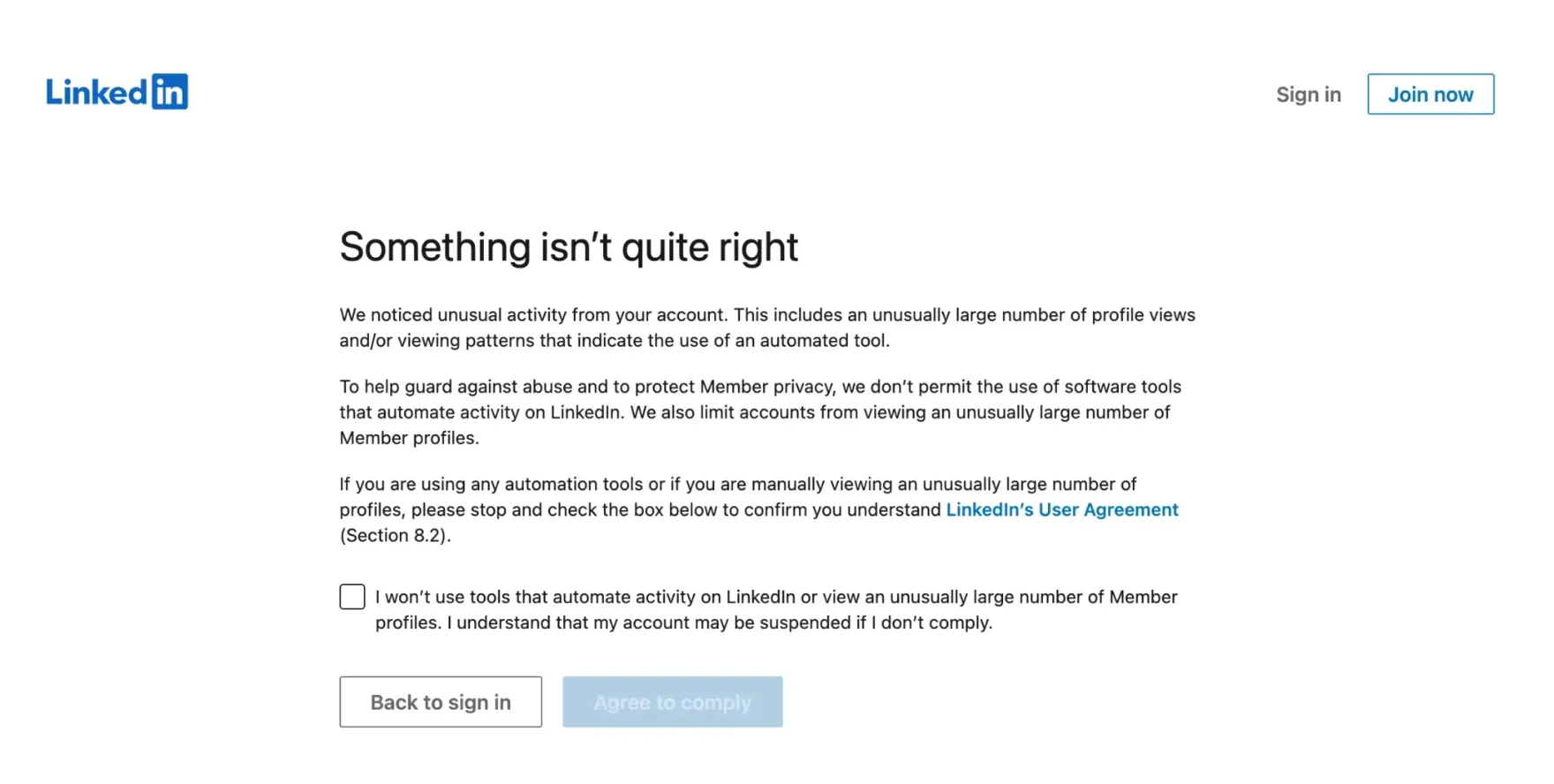
This fear-based myth stops many sales professionals from using automation's real benefits.
Where This Fear Comes From
- High-profile account restrictions and widely shared horror stories create the impression that any automation triggers LinkedIn penalties.
- This wrong idea causes sales teams to avoid valuable lead generation opportunities or rely on slow manual processes.
LinkedIn's Real Policy Position
- LinkedIn stops aggressive, spammy automation practices. However, the platform accepts legitimate business use cases for respectful, rule-following automation.
- The key is understanding and respecting LinkedIn's guidelines rather than avoiding automation completely.
Rule-Following Automation Practices:
Realistic Daily Limits:
- Respect LinkedIn's connection limits (typically 100 connections per week)
- Honor message limits (usually 200 messages per week for standard accounts)
- Adjust limits based on account age and activity history
- Watch platform feedback and adjust accordingly
Human-Like Timing:
- Use random delays between actions
- Avoid obvious patterns that trigger detection algorithms
- Add natural browsing behaviors between activities
- Vary login times and session lengths
Quality Over Quantity:
- Focus on targeted outreach to qualified prospects
- Avoid mass connection requests to unrelated profiles
- Prioritize relevant messaging over volume-based approaches
- Research prospects before starting contact
Value-First Communication:
- Focus on helpful, relevant messaging over direct sales pitches
- Share industry insights and valuable resources
- Focus on building relationships before selling
- Show genuine interest in prospect success
The Rule-Following Framework for Safe Automation:
- Start with conservative limits and slowly increase based on account performance
- Add behavioral randomization to copy natural usage patterns
- Watch account health indicators regularly
- Keep detailed records of automation practices
- Review LinkedIn's terms of service updates quarterly
Risk Reduction Strategies:
- Use automation tools with built-in rule-following features
- Consider LinkedIn Sales Navigator for enhanced outreach capabilities
- Add graduated warning systems for unusual activity
- Keep backup communication channels for important prospects
Myth #5: Automation Removes the Need for Human Sales Skills

The most harmful myth affecting LinkedIn lead generation success.
The Replacement Wrong Idea
- Some sales professionals think automation handles the entire lead generation process, from initial outreach through deal closing.
- This approach treats automation as a complete sales replacement rather than a powerful helper tool.
The Strategic Truth
- Effective LinkedIn automation serves as a force multiplier for human sales expertise, not a replacement.
- The most successful sales teams use automation to handle repetitive tasks while focusing human energy on high-value activities.
The Combined Approach That Works:
Automated Initial Outreach:
- Let technology handle first connections and initial follow-ups
- Automate lead qualification sequences and basic nurturing
- Use automation for appointment scheduling and administrative tasks
- Add automated lead scoring and prospect prioritization
Human Relationship Building:
- Take over when prospects show genuine interest
- Handle detailed information requests personally
- Manage complex technical discussions with human expertise
- Provide strategic consultation for high-value opportunities
Personal Touch for High-Value Prospects:
- Manually handle enterprise accounts and strategic partnerships
- Customize approaches for complex deal scenarios
- Deliver personalized presentations and proposals
- Build long-term relationships through direct engagement
Critical Human Skills That Automation Cannot Replace:
- Strategic thinking for campaign development and market positioning
- Emotional intelligence for reading prospect needs and concerns
- Consultative selling for complex problem-solving discussions
- Negotiation expertise for deal structuring and closing
- Relationship management for long-term client retention
Making the Most of Automation-Human Partnership:
- Use automation insights to prepare for human interactions
- Let automation handle scheduling and administrative coordination
- Use automated lead scoring to prioritize human attention
- Apply human creativity to improve automated messaging effectiveness
The Hidden Cost of LinkedIn Automation Myths
These wrong ideas create real damage to your lead generation results.
Counting the Impact
Sales teams believing these myths generate 60% fewer qualified leads compared to those using evidence-based automation strategies.
The opportunity cost goes beyond immediate lead generation. Missed connections with ideal prospects often mean losing them to competitors who understand effective LinkedIn automation.
The Growing Effect on Business Growth
Reputation Damage:
- Poor automation practices damage sender reputation
- Reduced delivery rates affect future outreach success
- Basic messaging fails to show value propositions
- Spammy approaches create negative brand associations
Operational Problems:
- Account restrictions force costly manual processes
- Profile rebuilding requires significant time investment
- Poor targeting wastes marketing budgets
- Poor conversion rates increase customer acquisition costs
Competitive Disadvantages:
- Competitors capture prospects using better automation strategies
- Market share shrinks due to poor lead generation
- Revenue growth stops from poor pipeline development
- Brand positioning suffers from outdated approaches
Competitive Advantage Through Myth-Busting
Companies that embrace evidence-based LinkedIn automation consistently outperform competitors stuck in myth-driven thinking.
They build larger networks, generate more qualified leads, and close deals faster through strategic automation implementation.
Best Practices for Myth-Free LinkedIn Lead Generation
Transform your approach with these evidence-based strategies.
Strategic Implementation Framework:
1. Audience Research Foundation:
- Develop detailed ideal customer profiles based on demographics and behaviors
- Identify specific pain points and challenges your prospects face
- Research communication preferences and content consumption habits
- Map prospect journey stages and appropriate messaging for each
2. Message Personalization Strategy:
- Create value-driven content templates with dynamic personalization elements
- Develop industry-specific messaging variants for different market segments
- Add behavioral triggers based on prospect actions and engagement
- Test emotional appeals and logical arguments for different audience types
3. Safety-First Setup:
- Add conservative limits and human-like behaviors from day one
- Use randomized timing patterns that copy natural usage
- Watch account health metrics and adjust practices accordingly
- Keep detailed logs of all automation activities for rule-following
4. Performance Measurement Plan:
- Set clear KPIs aligned with revenue generation goals
- Create optimization schedules for continuous improvement
- Add feedback loops for rapid strategy adjustments
- Track leading and lagging indicators for predictive insights
Essential Success Metrics:
- Connection acceptance rates above 25% show effective targeting and messaging
- Message response rates above 15% prove compelling value propositions
- Lead-to-opportunity conversion rates above 5% show successful qualification processes
- Account health metrics confirm rule-following automation practices
Common Implementation Problems:
- Rushing to maximum sending limits without testing message effectiveness
- Ignoring audience feedback and performance data during optimization cycles
- Focusing on vanity metrics instead of revenue-generating activities
- Treating automation as completely separate from overall sales strategy
- Neglecting human relationship-building opportunities
The Future of Smart LinkedIn Automation

LinkedIn automation continues evolving beyond simple message sending toward sophisticated relationship building platforms.
New Capabilities:
- AI-powered insights help identify perfect timing for human intervention
- Advanced personalization creates truly contextual communication at scale
- Integration ecosystems connect LinkedIn activities with comprehensive sales workflows
- Predictive analytics forecast prospect behaviors and optimize engagement strategies
- Sentiment analysis adjusts messaging tone based on prospect responses
Strategic Implications:
Smart sales teams that embrace this evolution while avoiding myth-driven thinking will dominate their markets through superior lead generation results.
The future belongs to organizations that combine automation efficiency with human relationship-building expertise.
Conclusion: Transform Your LinkedIn Lead Generation Results
These five LinkedIn automation myths have cost countless sales professionals, SDRs, and agency owners millions in lost opportunities.
The choice is clear: continue believing outdated wrong ideas and watch competitors capture your ideal prospects, or embrace evidence-based automation strategies that generate consistent, scalable results.
Frequently Asked Questions:
Q1. Does LinkedIn automation kill personalization?
No. With AI-powered tools, LinkedIn automation enhances personalization by analyzing profiles, behaviors, and engagement patterns to deliver tailored messages.
Q2. Are all LinkedIn automation tools the same?
Not at all. Tools differ in safety features, personalization depth, CRM integrations, and compliance. Choosing the wrong one can hurt conversions and even risk account bans.
Q3. Can LinkedIn automation run successfully on autopilot?
No. LinkedIn automation requires ongoing monitoring, testing, and optimization. “Set and forget” approaches often lead to poor results and reduced engagement.
Q4. Does LinkedIn ban accounts using automation?
LinkedIn bans unsafe, spammy practices, not automation itself. Safe tools with human-like behavior, realistic limits, and value-driven messaging reduce risks.
Q5. Can automation replace human sales skills?
No. Automation handles repetitive tasks, but human skills like relationship-building, negotiation, and consultative selling remain irreplaceable.
Author bio:
Written by Mona Juneja, a B2B Sales Strategist with over 20+ years of sales experience at big names like Microsoft, Oracle, and DELL. I helped multiple Agencies streamline prospecting workflows, improve connection rates, and generate consistent sales-qualified leads through automation.
Ready to Transform Your LinkedIn Strategy?
Join thousands of professionals already using Bearconnect to automate their outreach and grow their network.
7-day free trial • Cancel anytime
Related Articles

How SaaS Founders Generate 50+ Qualified Leads Monthly with LinkedIn Automation
SaaS founders are now using LinkedIn automation to generate 50+ qualified leads every month. This guide shows how automated workflows, optimized outreach, and smart sequencing help you scale conversations, book more calls, and stay ahead of competitors still doing manual outreach.
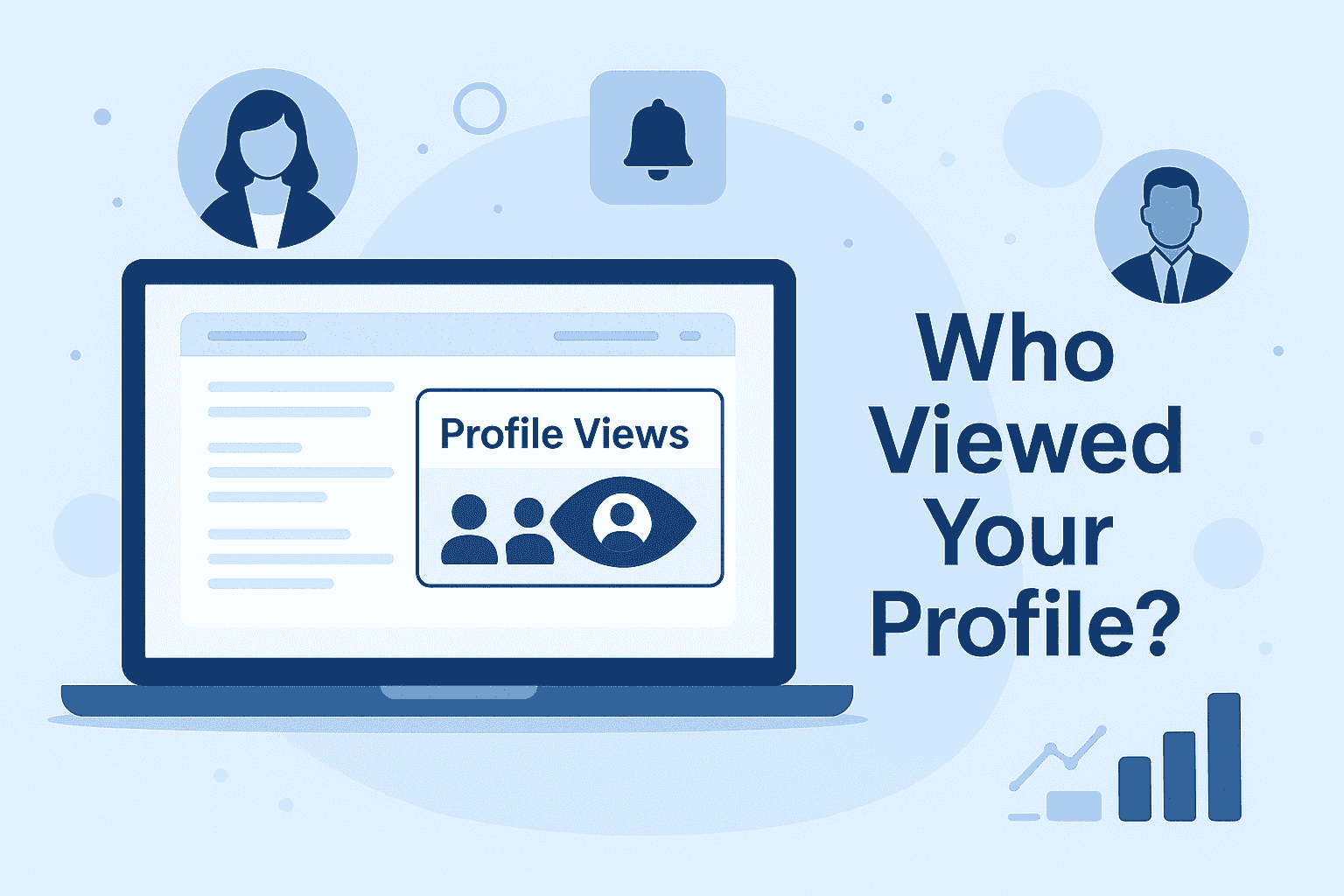
Does LinkedIn Show Who Viewed Your Profile? (Yes, Here's How to See Them)
Learn how LinkedIn’s profile viewer feature works, what free vs. premium users can see, and how sales and outreach professionals can use profile insights to identify warm leads and start better conversations.
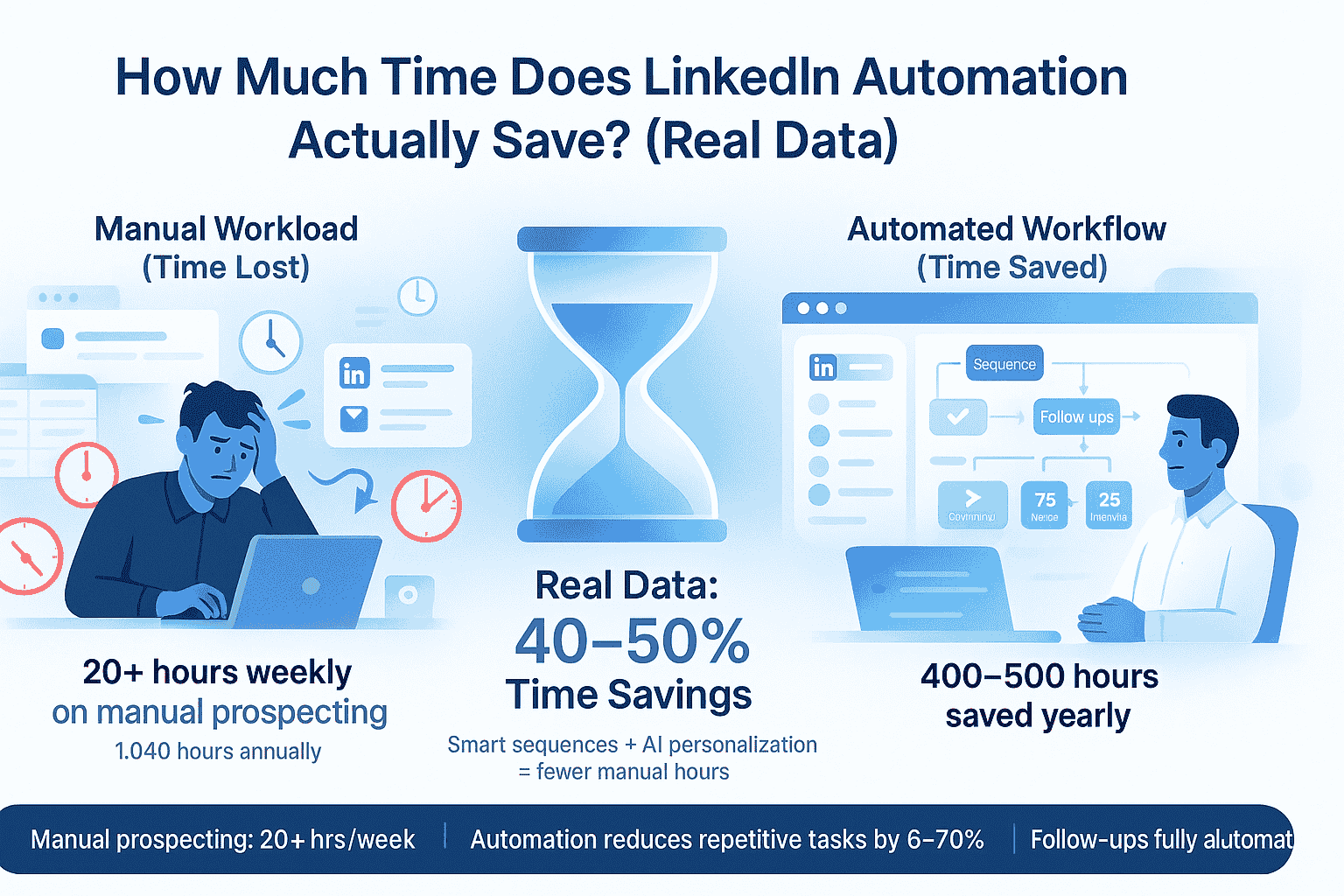
How Much Time Does LinkedIn Automation Actually Save? (Real Data)
According to research , Sales professionals spend an average of 20+ hours every week on manual LinkedIn prospecting. That's 1,040 hours annually or six full months of work devoted to repetitive tasks like sending connection requests, crafting messages, and tracking follow-ups. But what if you could reclaim 400+ hours per year while actually improving your results? We analyzed data from 50+ companies, industry benchmarks, and verified case studies to answer one critical question: How much time